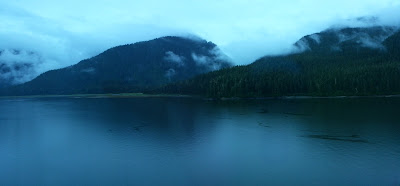The Bigger Picture

The Bigger Picture Today was a day of trimming trees for me, nothing too big mind you but just what I could reach with my saw-pole and extender (the trees in our backyard --which were all about 10 feet tall when we moved here-- are now at the 60-foot point; "at least they're done growing," I told the last arborist who had come to do the professional "cleaning," to which he shook his head no and told me that they were all at only about the halfway point...yikes). Some of the trees in back are box elder trees, native to our area, and the others are a mix of both elms and maple (with one black walnut tree that snuck in thanks to a frisky squirrel whose earlier generations must have forgotten where one of their winter hoards lay buried). All of them are considered "dirty" trees by many due to the plethora of "helicopter" seeds that twirl down like moths with broken wings, or in the case of the elms, the taffeta paperlike dots of seeds t...







